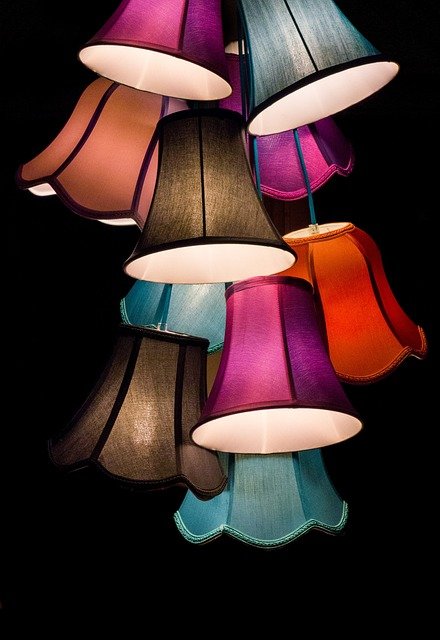Illuminating Interiors: The Art of Shadow Play in Home Design
Imagine stepping into a room where light and shadow dance across surfaces, creating an ever-changing tableau of visual intrigue. This isn't a gallery installation or a theatrical set—it's the cutting-edge world of shadow play in home design. As homeowners seek more dynamic and personalized spaces, designers are harnessing the power of light and shadow to transform ordinary rooms into captivating environments that shift with the sun's journey across the sky.

Historical Roots and Modern Revival
While shadow play might seem like a contemporary trend, its roots stretch back centuries. In traditional Japanese architecture, the concept of ‘komorebi’—the interplay of light and leaves—has long been celebrated. Mashrabiya screens in Islamic architecture serve both practical and aesthetic purposes, filtering light to create intricate shadow patterns. Today’s designers are revisiting these historical techniques with a modern twist, incorporating new materials and technologies to achieve stunning effects.
Architectural Elements as Shadow Casters
Innovative architects are now designing homes with shadow play in mind from the ground up. Perforated screens, latticed walls, and strategically placed windows are being used to create ever-changing light displays within living spaces. For example, a series of angled slats on an exterior wall can cast dramatic linear shadows that move across the floor and walls as the sun travels, turning a simple hallway into a kinetic art piece.
Furniture and Decor as Shadow Sculptors
It’s not just about architecture—carefully chosen furniture and decor items can also contribute to the shadow play effect. Designers are creating lamps, room dividers, and even coffee tables with intricate cut-out patterns specifically designed to cast beautiful shadows. A delicately perforated pendant light can transform a dining room ceiling into a celestial display, while a laser-cut room divider can project lace-like patterns across the floor, adding visual interest without sacrificing openness.
The Role of Color in Shadow Dynamics
The interplay between color and shadow adds another layer of complexity to this design approach. Pale, neutral walls serve as the perfect canvas for shadow play, allowing the patterns to take center stage. However, some designers are experimenting with colored lights or tinted glass to cast chromatic shadows, creating a more vibrant and playful atmosphere. Imagine a home office where the afternoon sun casts a subtle blue shadow through a tinted window, evoking a sense of calm and focus.
Technology and Programmable Shadow Play
As smart home technology advances, so does the potential for dynamic shadow play. Programmable LED lights and motorized blinds can be synchronized to create pre-set shadow scenes throughout the day. Homeowners can now design their ideal morning wake-up sequence, with gentle patterns slowly revealed as motorized blinds open, or set the mood for evening entertaining with dramatic lighting effects that evolve as the night progresses.
DIY Shadow Play: Accessible Design for All
While high-end architectural solutions can be costly, the beauty of shadow play is that it can be achieved on any budget. DIY enthusiasts are creating their own perforated panels using affordable materials like MDF or even repurposed items like old shutters. Window films with intricate patterns offer a non-permanent way to experiment with light filtration, while carefully placed plants can create organic, ever-changing shadow patterns.
The Psychological Impact of Dynamic Spaces
Beyond aesthetics, the integration of shadow play into home design has profound psychological benefits. Spaces that change throughout the day feel more organic and connected to the natural world, potentially reducing stress and improving overall well-being. The subtle movement of shadows can create a meditative atmosphere, turning a simple act like enjoying a morning coffee into a mindful experience as you observe the play of light across your living space.
Challenges and Considerations
While the allure of shadow play is undeniable, it’s not without its challenges. Designers must carefully consider the practical implications of their creations. Will the shadows interfere with task lighting in key areas? How will the effects change with the seasons, especially in regions with dramatic shifts in daylight hours? Balancing the artistic vision with functionality is crucial to creating a space that’s both beautiful and livable.
The Future of Shadow Play in Home Design
As we look to the future, the potential for shadow play in home design seems boundless. Advances in materials science may lead to surfaces that can change their transparency or pattern on demand, allowing for even more dynamic shadow effects. Virtual and augmented reality technologies could enable homeowners to preview and fine-tune shadow play designs before implementation, ensuring the perfect balance of light and shadow in their living spaces.
In conclusion, the art of shadow play represents a exciting frontier in home design, offering a way to create spaces that are not just visually stunning, but emotionally resonant and deeply connected to the rhythms of the natural world. As this trend continues to evolve, we can expect to see homes that are not just places to live, but ever-changing canvases that celebrate the beauty of light and shadow in all its forms.





